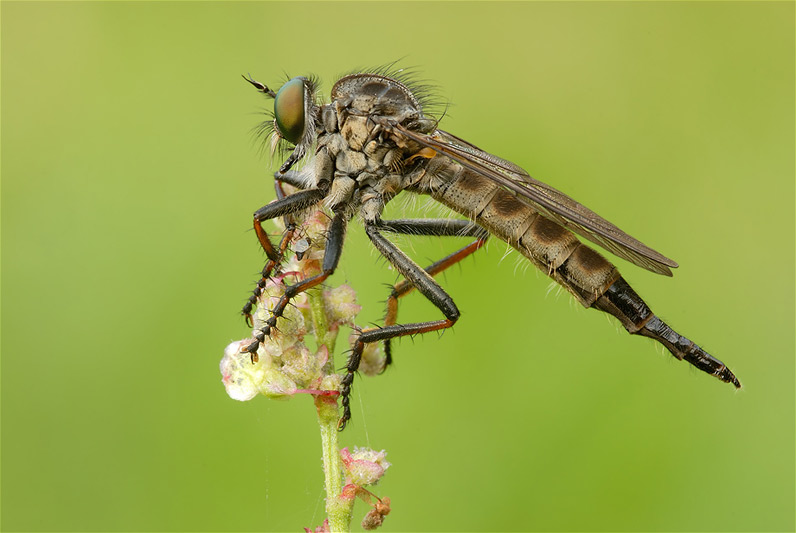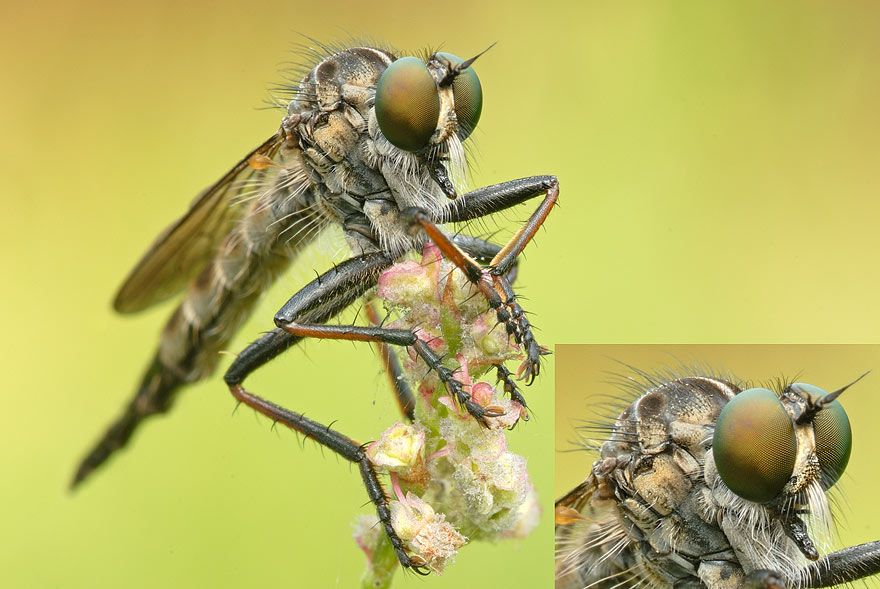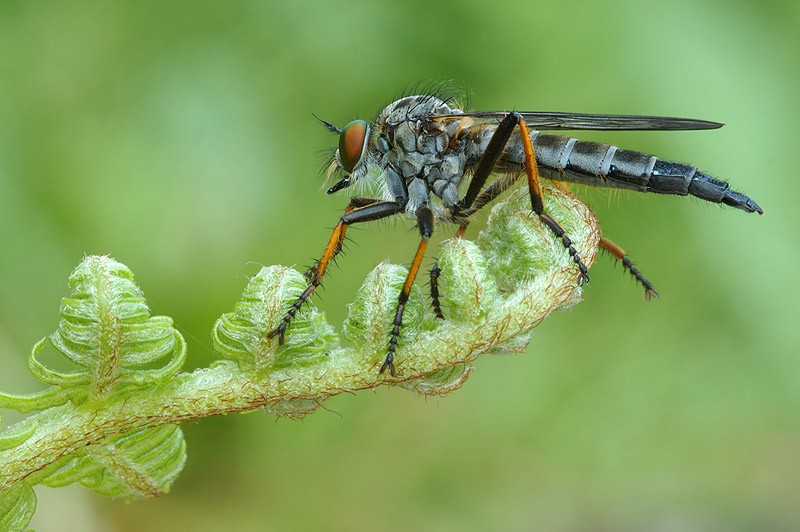Diptera.info :: Family forums :: Asilidae Forum
|
unknown robberfly
|
|
| Markus Gebel |
Posted on 19-07-2006 10:12
|
|
Member Location: Germany Posts: 210 Joined: 18.07.06 |
Hello Here I present another robberfly which is unfortunately unknown to me.  I photographed also this fly at the border of Poland and Germany (1.7.2006). Who can help me? I photographed also this fly at the border of Poland and Germany (1.7.2006). Who can help me?best regards Markus Markus Gebel attached the following image:  [79.08Kb] |
| Tony Irwin |
Posted on 19-07-2006 18:04
|
|
Member Location: Norwich, England Posts: 7327 Joined: 19.11.04 |
Hi Markus This is a female Neoitamus - the long tapering ovipositor is characteristic. I wouldn't like to say which species without seeing a specimen, even though your photo is so sharp. 
Tony ---------- Tony Irwin |
|
|
|
| Markus Gebel |
Posted on 19-07-2006 21:57
|
|
Member Location: Germany Posts: 210 Joined: 18.07.06 |
Hello Tony Thank you very much.:-) Would it be helpful if I extend single fields of the picture and show this single of the picture in a good quality here? best regards  Markus Gebel |
| Tony Irwin |
Posted on 19-07-2006 23:03
|
|
Member Location: Norwich, England Posts: 7327 Joined: 19.11.04 |
Markus - The bristle colour on the front and mid femora appears to rule out cothurnatus, leaving just socius and cyanurus as candidates in your area. The females of these two species are pretty well inseparable, except for the distribution of microtrichia in the first basal cell of the wing. If you have a very detailed dorsal shot, showing the wing microtrichia, we might be able to make a decision, but I don't think we can work with a lateral shot. 
Tony ---------- Tony Irwin |
|
|
|
| Markus Gebel |
Posted on 20-07-2006 00:21
|
|
Member Location: Germany Posts: 210 Joined: 18.07.06 |
Tony Unfortunately I do not have any photo in wanted perspective. With a photo from another visual angle I can be helpful. I think that that does not bring us for the success. I thank you very much for your efforts. Best greetings Markus Markus Gebel attached the following image:  [100.04Kb] |
| Tony Irwin |
Posted on 20-07-2006 00:40
|
|
Member Location: Norwich, England Posts: 7327 Joined: 19.11.04 |
Another beautiful photo, but does not show what we need.  If anyone has females of both socius and cyanurus, they may be able to discover more differences. Unfortunately here I only have specimens of cyanurus. Tony ---------- Tony Irwin |
|
|
|
| Kahis |
Posted on 20-07-2006 08:11
|
|
Member Location: Helsinki, Finland Posts: 1999 Joined: 02.09.04 |
I do have both. N. socius is one of the more common asilids in Finland, N. cyanurus is rather rare here. In Finnish material these two species can normally be told apart by color color of tibiae. The tibiae of socius are reddish orange, often with large, ill-defined darker areas. N. cyanurus has bright yellow-orange tibiae with black confined to small apical band. In all specimens I've seen this character match with the microtrichia, but as it is a color character I'd be surprised if it wouldn't fail sometimes or somewhere. Markus' fly appear to be typical N. socius. Edited by Kahis on 20-07-2006 08:13 Kahis |
| Markus Gebel |
Posted on 20-07-2006 11:12
|
|
Member Location: Germany Posts: 210 Joined: 18.07.06 |
Tony I was very pleased with your contributions! To thanks! Kahis Thanks! I understood your description. It is'nt for me so easy to understand English technical terms. If I have understood you correctly, I showed firstly Neoitamus socius. Now, the new, current photo shows Neoitamus cyanurus with yellowish legs. Maybe it is interesting to be able to see the differences between both species directly in a contribution. Or I lie with my opinion wrongly and interpreted the differences wrongly? I thank You once again very much.  Greetings from Duisburg/Germany Markus Markus Gebel attached the following image:  [98.07Kb] |
| Kahis |
Posted on 20-07-2006 11:27
|
|
Member Location: Helsinki, Finland Posts: 1999 Joined: 02.09.04 |
Yes! You got it right. Thanks for the 2nd photo, it illustrated the difference very well.
Kahis |
| Markus Gebel |
Posted on 20-07-2006 11:42
|
|
Member Location: Germany Posts: 210 Joined: 18.07.06 |
   I'am happy!!! Grettings Markus |
| Paul Beuk |
Posted on 20-07-2006 12:07
|
|
Super Administrator Location: Netherlands Posts: 19403 Joined: 11.05.04 |
Hehe, another satisfied customer. 
Paul - - - - Paul Beuk on https://diptera.info |
| Markus Gebel |
Posted on 20-07-2006 12:49
|
|
Member Location: Germany Posts: 210 Joined: 18.07.06 |
@Paul: YES... sure!  best regards Markus |
| Juergen Peters |
Posted on 21-07-2006 00:06
|
|
Member Location: northwest Germany Posts: 14358 Joined: 11.09.04 |
Hello, Markus! I'm no Diptera specialist at all, but I enjoyed your phantastic photos!! :-)) Best regards, Jürgen -=-=-=-=-=-=-=-=-=-=-=-=-=-=-=-= Juergen Peters Borgholzhausen, Germany WWW: http://insektenfo... -=-=-=-=-=-=-=-=-=-=-=-=-=-=-=-= |
| Jump to Forum: |













